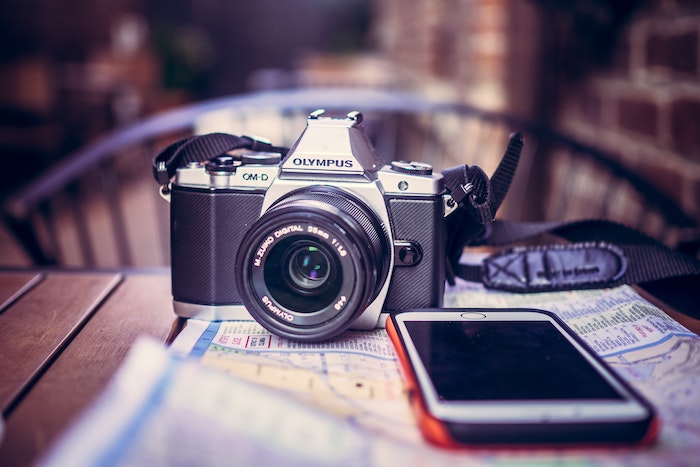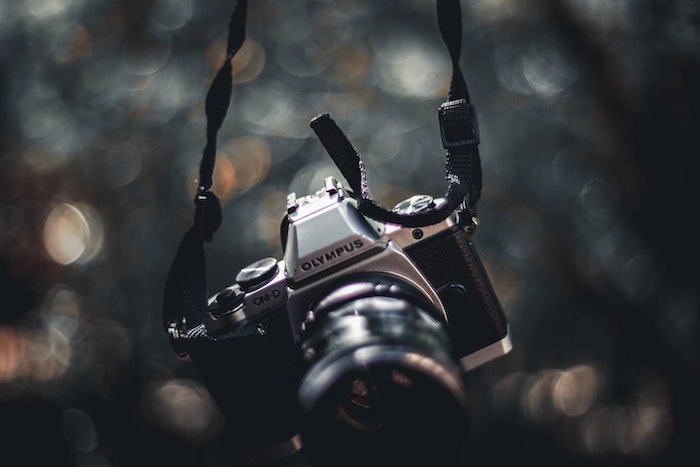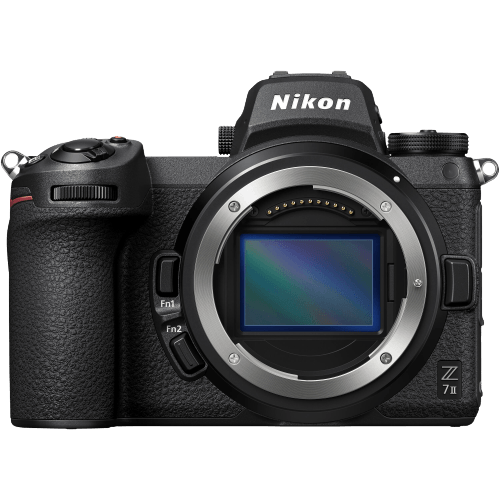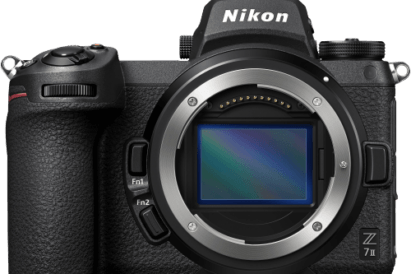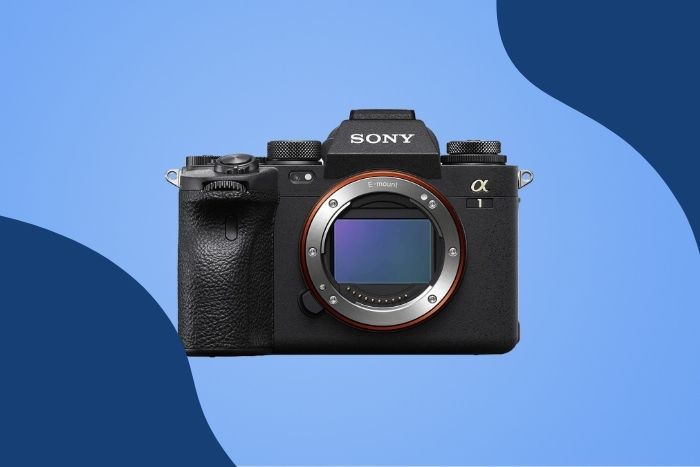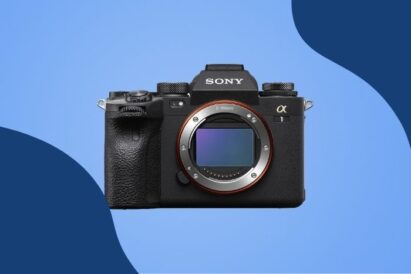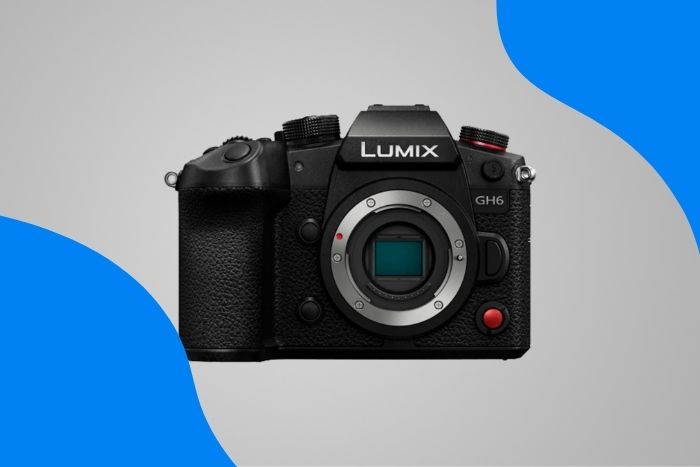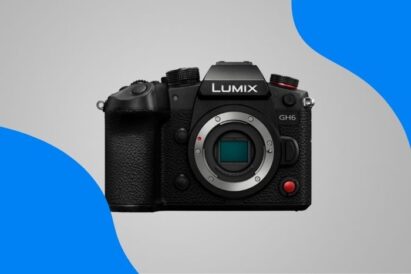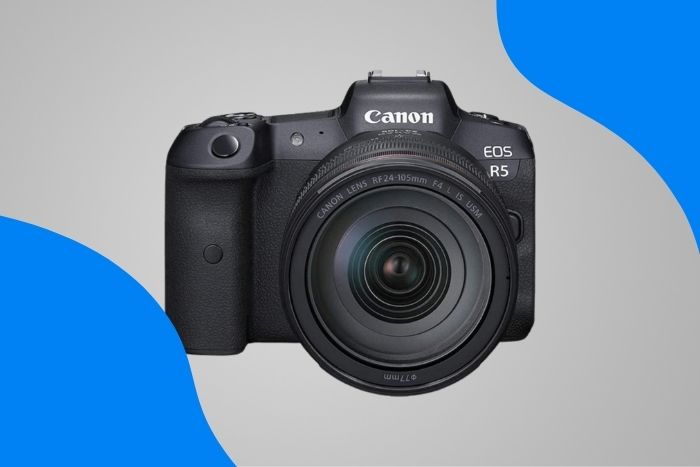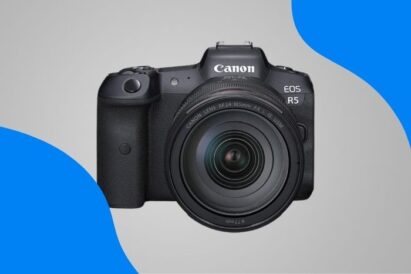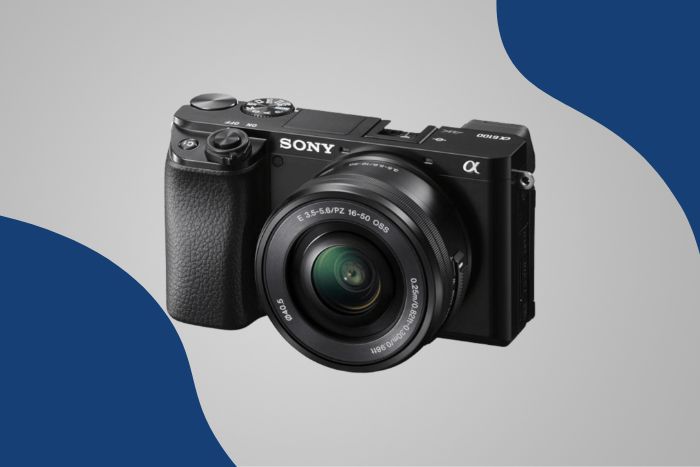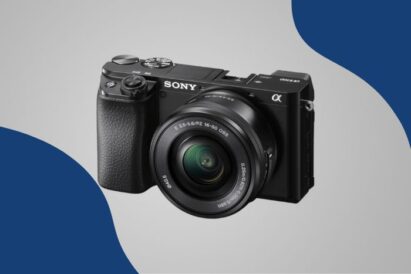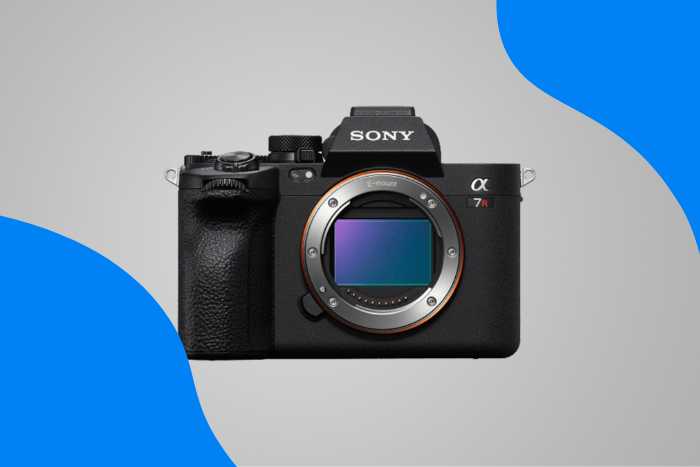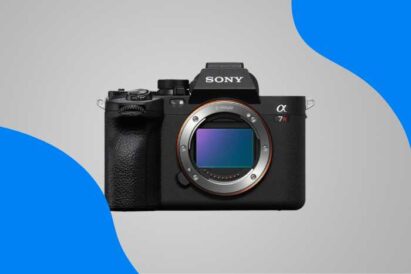Today, we look at the best Micro Four Thirds cameras on the market! They will never provide the resolution and autofocus capability of a full frame mirrorless or DSLR camera. But MFT cameras occupy a valuable niche in the photographic market. They’re lightweight, and you can switch seamlessly from shooting stills to 4K video.
Panasonic and Olympus brought out the first Micro Four Thirds cameras in 2008. The idea was that they’d be based on and compatible with the existing Four Thirds camera system. They’d use an 18 x 13.5 mm sensor—but be mirrorless.
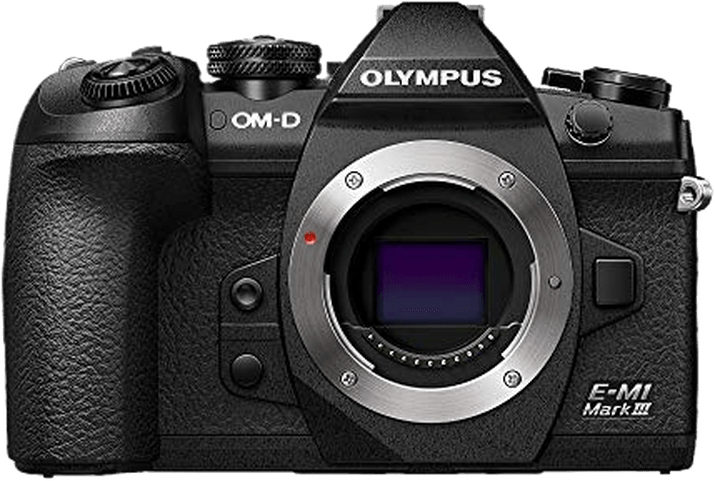
Olympus OM-D E-M1 Mark III
The advantage of the new design was no more need for a mirror box and pentaprism. It meant the cameras and lenses could be much smaller and lighter. Plus, the distance from the lens mount to the sensor (“flange back distance”) would be halved from 40 mm to 20 mm. And the diameter of the lens mount would be 6 mm smaller.
What does that all mean? Well, you get all the benefits of a mirrorless camera. But they’re smaller, lighter, and much more affordable than a full frame camera model. And the same goes for their lenses!
What Are the Best Micro Four Thirds Cameras to Buy?
Olympus and Panasonic don’t make all of the Micro Four Thirds interchangeable lens cameras and lenses. But all the ones on this list have been. That reflects their historical importance in launching the format and the investment they’ve made over the last few years.
These two manufacturers tend to shadow each other. So the specifications of their Micro Four Thirds systems are often very similar. But there are subtle differences. Here’s a brief list before we delve into specifics.

- Excellent image stabilization
- Great face and eye detection
- Fantastic JPEG quality
- Good buffer depth
- Solid camera build
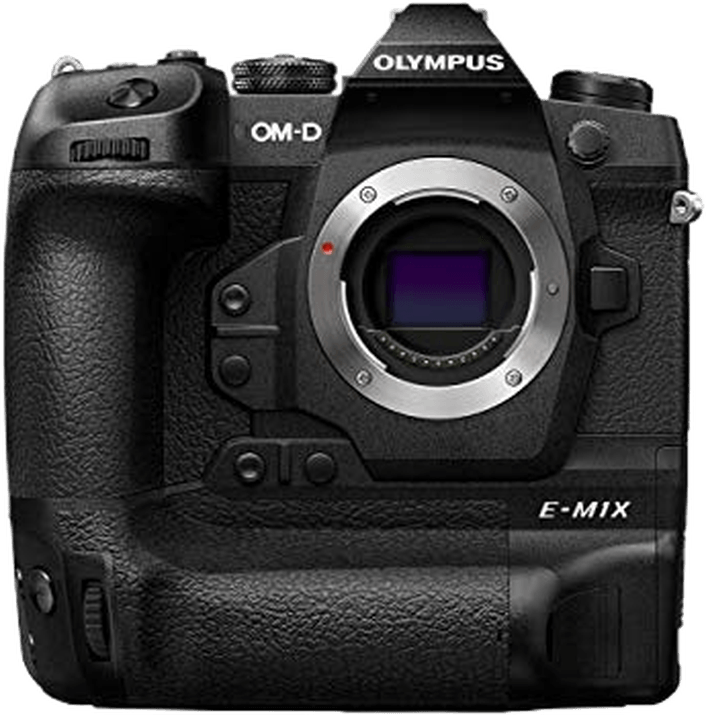
- Impressive autofocus
- Fantastic subject tracking
- Great 18 fps frame rate
- Good dynamic range
- Weather-sealed body
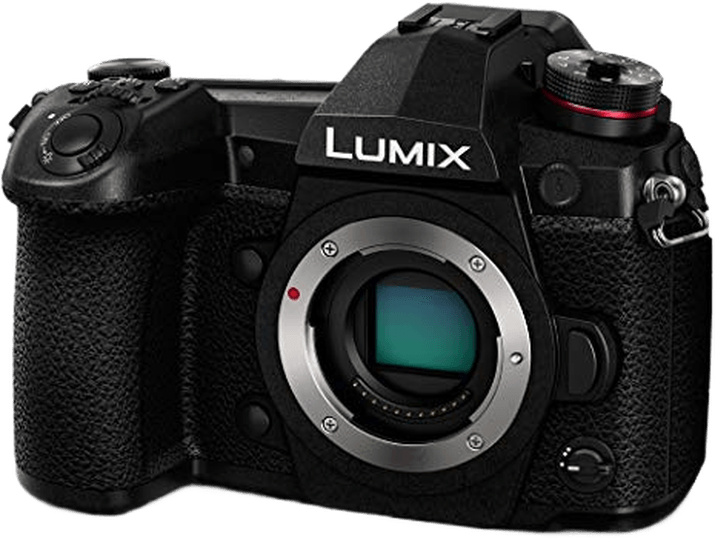
- Excellent 20 fps frame rate
- 80 MP High Res mode
- Full weather-sealing
- High-resolution EVF
- Lots of connectivity ports
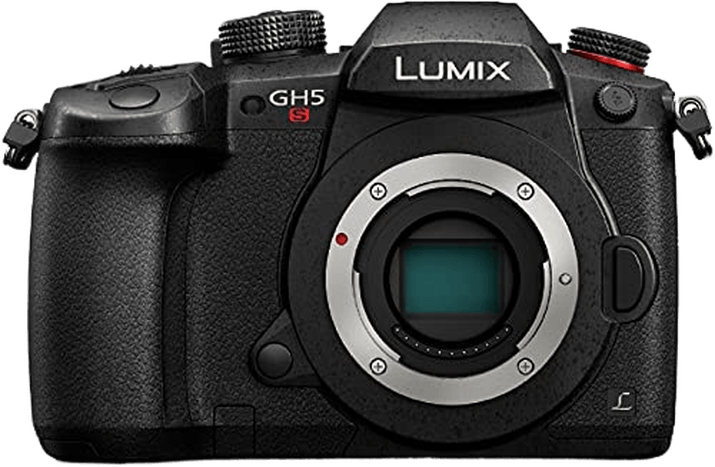
- Improved noise reduction
- Excellent dynamic range
- Oversized sensor for uncropped ratios
- Fantastic video options
- Fast readouts
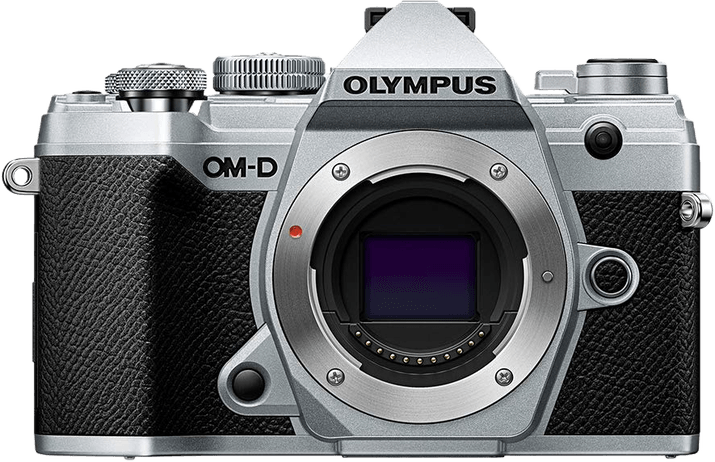
- Portability
- Excellent in-body stabilization
- Good JPEG quality
- Phase-detection autofocus
- Stylish design
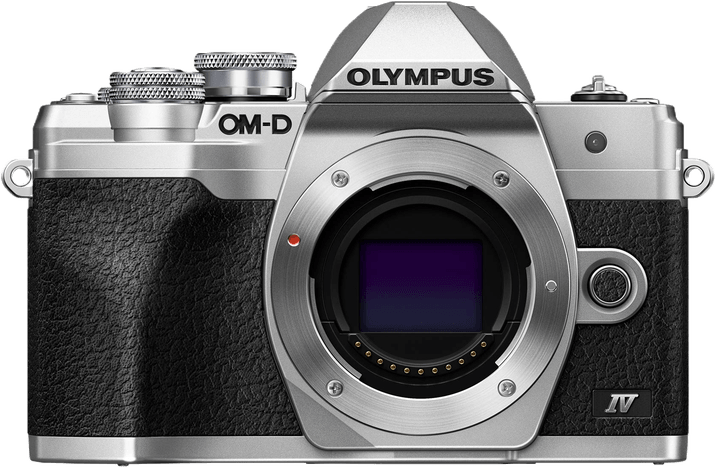
- Excellent for beginners
- Affordable entry-level option
- Lots of compatible lenses
- Light and compact
- Flip screen for selfies
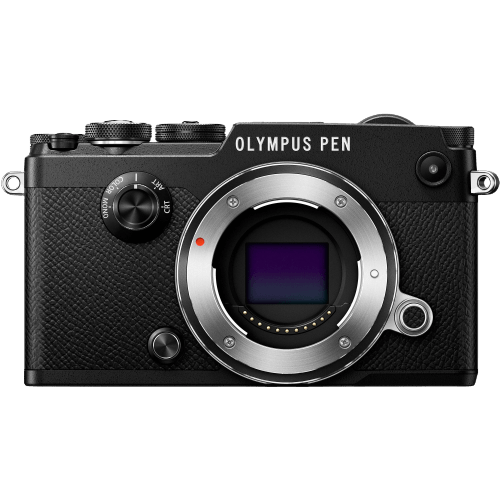
- Range-finder controls
- Easy to carry around
- Articulating touchscreen
- Solid foundation of features
- Stylish design
7 Best Micro Four Thirds Cameras to Buy
We’ve tried to cover the essential differences in our award badges, the lists of pros and cons, and the detailed reviews. So here’s our list of the best Micro Four Thirds cameras out there!
1. Olympus OM-D E-M1 Mark III

| Camera Type |
Camera Type
|
| Megapixels |
Megapixels
20 MP |
| Sensor Format |
Sensor Format
|
| Sensor Size |
Sensor Size
17.4 x 13 mm
|
| Frame Rate |
Frame Rate
60 fps |
| Autofocus Points |
Autofocus Points
121 |
- Multi-shot, handheld, high-res mode
- Compact and lightweight
- 60 fps RAW and JPEG image capture
- 7 stops of image stabilization
- Simulated Live ND filters
- Quick-and-easy Pro Capture (action) and Starry Sky AF modes
- Excellent video options
- Relatively low sensor resolution
- Not the best when pushing the high ISO range
- Unreliable subject tracking
- No vehicle and train recognition AF modes like the E-M1X
- Complicated menus
- Relatively short 420-shot battery life
The Olympus OM-D E-M1 Mark III is our choice for the best Micro Four Thirds camera available today. This interchangeable lens MFTcamera is a minor upgrade on the Mark II (full comparison of both cameras here). It offers exceptional in-body image stabilization (IBIS), face and eye detection, JPEG image quality, buffer depth, and build quality. But the resolution, frame rate, autofocus, electronic viewfinder (EVF), log video capture, and 4K video capabilities are all just “decent.” That might not be enough when there’s such fierce competition from other mirrorless models with larger sensors and better subject tracking.
But like all the best Micro Four Thirds cameras, the OM-D E-M1 Mark III has the advantage of a compact and lightweight construction. And it works with thousands of lightweight and compact lenses. That makes it a good choice for travel photographers or anyone who can’t bear lugging around a heavy DSLR.
There are also a few handy features like Pro Capture mode—for taking pictures when you press the shutter halfway—and Starry Sky AF (autofocus). It also has IPX1-rated weather sealing, in-camera RAW file conversion, and a high-resolution shot mode for static subjects. Finally, an ingenious Live Composite mode lets you build up a multiple exposure image on the rear screen, like laying down layers of paint on a canvas.
2. Olympus OM-D E-M1X

| Camera Type |
Camera Type
|
| Megapixels |
Megapixels
20 MP |
| Sensor Format |
Sensor Format
|
| Sensor Size |
Sensor Size
13 x 17.4 mm
|
| Frame Rate |
Frame Rate
60 fps |
| Autofocus Points |
Autofocus Points
121 |
- Good resolution and dynamic range
- Excellent subject tracking
- A great frame rate and deep buffer
- Pleasing JPEG colors
- Up to 7.5 stops of in-body image stablization with supported lenses
- Weather-sealed body
- Expensive
- Sensor doesn't match up to many close competitors
- Electronic shutter might lead to rolling shutter effects and banding
- Large, heavy, hard to handle body
- Motion artifacts with Cinema 4K at 24p
With this M-D E-M1X camera, Olympus threw everything at the wall, and most of it stuck! It has the best specs of all its Micro Four Thirds cameras.
The dual-grip design, IBIS, 60-frame buffer, twin batteries, and impressive autofocus system make it the best micro 4/3 camera for sports photographers… as long as they really don’t want a full frame camera!
It’s capable of 4K video, and the AF tracking and face detection are good. But it tends to have motion artifacts, its 1080 / 120p slow-motion footage is not as sharp as it might be, and it can’t produce a 10-bit signal.
Also, the sensor-plus digital image stabilization (M-IS 1) comes with a 1.19x crop. And the headphone or microphone cable gets in the way when the LCD is flipped open.
3. Panasonic Lumix DC-G9

| Camera Type |
Camera Type
|
| Megapixels |
Megapixels
20 MP |
| Sensor Format |
Sensor Format
|
| Sensor Size |
Sensor Size
17.3 x 13 mm
|
| Frame Rate |
Frame Rate
20 fps |
| Autofocus Points |
Autofocus Points
225 |
- High Resolution mode for detailed images of static subjects
- Lots of custom button options and touchscreen functionality
- An LCD screen on the top plate
- Easy Wi-Fi and Bluetooth connectivity
- Durable, weather-sealed body
- Excellent 4K / 60p Ultra HD video
- Contrast-detection autofocus wobbles in electronic viewfinder
- Unresponsive AF joystick can't make diagonal movements
- Your nose can accidentally activate the touchpad AF
- Rolling shutter effects visible at 20 fps
The Panasonic Lumix G9 might be the MFT camera body if you feel the need for speed. The continuous shooting speed of 20 fps in continuous autofocus mode puts it in the same bracket as some of the best full frame mirrorless cameras on the market. It even manages 60 fps using single-point AF!
Admittedly, it only has a 20.3 MP sensor, but that’s still not bad. And there’s more! It has decent autofocus, a 6.5-stop IBIS system, and a High-Resolution mode to create 80 MP images. It also features a touchscreen display, full weather-sealing, a high-resolution EVF, and enough ports for a major seafaring nation!
The video capability doesn’t match the GH5S, but it isn’t bad. The Panasonic Lumix G9 can shoot 4K / 60p Ultra HD footage. And the sizeable 0.83x OLED EVF, 5-axis sensor stabilization, and Depth-from-Defocus autofocus system make life much easier. All that’s missing is phase-detect focus points, which would have helped the camera lock on to moving subjects and stabilize the viewfinder image.
4. Panasonic Lumix GH5S

| Camera Type |
Camera Type
|
| Megapixels |
Megapixels
10 MP |
| Sensor Format |
Sensor Format
|
| Sensor Size |
Sensor Size
19.2 x 13 mm
|
| Frame Rate |
Frame Rate
12 fps |
| Autofocus Points |
Autofocus Points
225 |
- Large, detailed viewfinder
- Advanced video options, like vectorscopes and waveforms
- Impressive 10-bit 4:2:2 internal video capture up to 30p
- Excellent video options of 4K DCI and Ultra HD video up to 60p
- Still-photo performance is compromised by video emphasis
- Lack of in-body image stabilization means you need a gimbal or tripod
- Problematic focus hunting with video
- Requires a higher-end V90 card, not just a V60
The Panasonic Lumix GH5S is very similar to the GH5. But it makes our list based on being slightly better for videography. Plus, there are several improvements.
It has fewer and larger pixels to improve noise reduction at high ISOs, reducing rolling shutter due to faster readout. The oversized sensor allows uncropped aspect ratios (4:3, 16:9, 1:1, 17:9, and 3:2).
The GH5S has an ISO range of 160-51,200 (expandable to 80-204,800) with Dual Native ISO technology for better low-light performance. And it offers 14-bit RAW files to display a more excellent dynamic range.
With video, it offers 4K Ultra HD and Cinema 4K at 50p or 60p, a maximum of 240 fps variable frame rate (VFR) for slow motion, and a V-Log L gamma curve for the most comprehensive possible dynamic range. But it’s essential to remember that these video improvements have come at the expense of still photography features such as autofocus, IBIS, and sensor resolution.
Like the Sony a7S II, it’s a specialist video camera. So don’t buy one, expecting it to be anything different! It’s the best micro 4/3 camera for video on our list.
5. Olympus OM-D E-M5 Mark III

| Camera Type |
Camera Type
|
| Megapixels |
Megapixels
20 MP |
| Sensor Format |
Sensor Format
|
| Sensor Size |
Sensor Size
17.4 x 13 mm
|
| Frame Rate |
Frame Rate
60 fps |
| Autofocus Points |
Autofocus Points
121 |
- Multi-shot, handheld, high-res mode
- Compact and lightweight
- 60 fps RAW and JPEG image capture
- 7 stops of image stabilization
- Simulated Live ND filters
- Quick-and-easy Pro Capture (action) and Starry Sky AF modes
- Excellent video options
- Relatively low sensor resolution
- Not the best when pushing the high ISO range
- Unreliable subject tracking
- No vehicle and train recognition AF modes like the E-M1X
- Complicated menus
- Relatively short 420-shot battery life
The OM-D E-M5 is a smaller, lighter version of the better-known E-M1 and E-M1X models. It has the same sensor, autofocus system, and ability to shoot 4K video. It also offers phase-detect autofocus, which helps face and eye detection.
It’s a good-looking camera. And it covers all the bases when it comes to both still photography and video. The JPEG and RAW-image quality are good. The continuous shooting speed of 10 fps is fine. It shoots video in 4K, and the image stabilization is excellent.
You also get the usual Olympus features such as Live Time for long exposures, IPX1 weather-sealing, and a High-Resolution mode for detailed images of static subjects. Its overall specs are perfect for travel photography.
The only problem is the competition. Yes, the Mark III looks stylish, lets you keep shooting with your existing lenses, and does almost everything a Micro Four Thirds camera is expected to do. But if you’re starting from scratch, are its autofocus and sensor resolution good enough to beat Fujifilm’s APS-C cameras? Or all the full frame DSLRs and mirrorless cameras out there?
6. Olympus OM-D E‑M10 Mark IV

| Camera Type |
Camera Type
|
| Megapixels |
Megapixels
20 MP |
| Sensor Format |
Sensor Format
|
| Sensor Size |
Sensor Size
13 x 17.4 mm
|
| Frame Rate |
Frame Rate
15 fps |
| Autofocus Points |
Autofocus Points
121 |
- Affordable
- Very beginner-friendly
- Excellent image quality
- Built-in image stabilization for video and low light
- Endless list of compatible lenses
- Excellent 4K video features
- Small sensor
- AF has slow continuous shooting
- Contrast-detection AF system is slower than phase-detection systems
- No microphone and headphone jacks
- Plastic body and isn't weather sealed
The OM-D E-M10 Mark IV is an upgrade on the Mark III. It offers an extra 4 MP of resolution. The Mark IV is perfect for beginners who want to step up from their smartphones. Or it’s great for hobbyists looking for an affordable second camera body that won’t feel like a millstone around their necks!
It ticks all the boxes for an entry-level mirrorless camera. And the in-body image stabilization helps shoot at slow shutter speeds in low light. It’s also light and compact enough for travel and street photography.
The video features might not set the world alight, but being able to shoot 4K / 30p footage is no mean feat. And the fact you can flip the screen to face forward to shoot selfie videos is an important factor.
7. Olympus Pen-F

| Camera Type |
Camera Type
|
| Megapixels |
Megapixels
20.3 MP |
| Sensor Format |
Sensor Format
|
| Sensor Size |
Sensor Size
13 x 17.4 mm
|
| Frame Rate |
Frame Rate
10 fps |
| Autofocus Points |
Autofocus Points
81 |
- 80MP RAW image (or 50MP JPEG) multi-shot composite mode
- 6 "Creative Mode" film presets
- Fully articulating touchscreen
- FL-LM3 flashgun included
- Stylish design
- It weighs only 427g
- No phase-detect autofocus for capturing action
- Complex Olympus menus
- Awkward when using zoom lenses
- No weather-sealing
- Only a 330-shot battery life
The first Olympus Pen-F was a 35mm film camera released in 1963. So this is a stylish digital remake. It has an aluminum, magnesium, and faux leather body. And it is aimed at street photographers comfortable with rangefinder-like controls.
The basic Olympus feature set should now be familiar. The Pen-F has a 20 MP sensor with 5-stop, 5-axis IBIS (including automatic panning detection), 10 fps continuous shooting, a fully articulating three-inch touchscreen, and a 50 MP high-resolution mode. It’s a solid foundation of features.
It’s not capable of shooting in 4K. But 1080 / 60p Full HD video recording is not too bad if you’re more focused on still photography.
Our Verdict
The E-M1 Mark III and the E-M1X are the best Olympus offers. The G9 is Panasonic’s flagship product. But there are niches within niches. So the GH5S might suit videographers better, and the Olympus E-M5 Mark III is best for travel.
Finally, Olympus designed the E-M10 as an entry-level Micro Four Thirds camera, whereas the Pen-F is more of a stylish accessory for street photographers.

Olympus OM-D E-M1 Mark III
If you’re considering buying one, the best Micro Four Thirds camera will probably come from Olympus or Panasonic. They offer stylish, lightweight models with excellent image quality and 4K Ultra HD footage.
Micro Four Thirds Camera FAQ
If you’re still unsure whether to take the plunge, read our Micro Four Thirds frequently asked questions below.
Is It Worth Buying a Micro 4/3 Camera?
If you’re looking for an affordable, lightweight, versatile camera that can shoot 4K video and stills, then a Micro Four Thirds camera is an option. It might not be your only camera or primary camera, but it will do the job.
Buying a Micro Four Thirds is a cheaper way to test the waters if you have a smartphone or compact camera. And you can always upgrade to an APS-C or full frame camera model later.
Most Micro Four Thirds cameras have touchscreen functionality and plenty of dedicated dials. So it’s not that difficult to learn how to operate. They also tend to be quite stylish with a retro vibe if you like that, particularly the rangefinder-style models.
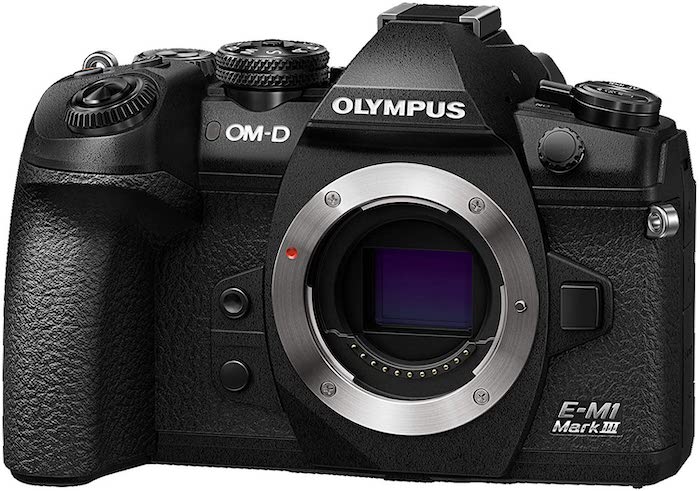
What Companies Make Micro 4/3 Cameras?
It’s not just Panasonic and Olympus that make Micro Four Thirds cameras. Several other companies do, including Blackmagic, DJI, JVC, Kodak, Sharp, and Xiaomi. Plus, there are quite a few third-party lens manufacturers:
- 7Artisans
- Cosina Voigtländer
- Kowa
- Laowa
- Lensbaby
- Mitakon
- Samyang
- Sigma
- SLR Magic
- Tamron
- Tokina
- TTArtisan
- Venus Optics
- Veydra
- Yongnuo
- Zonlai
What Photographers Use a Micro 4/3 Camera?
Micro Four Thirds cameras are ideal for travel, street, or photojournalists—or hikers who don’t fancy lugging around a heavy DSLR and a ton of glass!
Admittedly, they don’t have the resolution for wedding, portrait, or landscape photography. And the contrast-detection autofocus systems are not usually good enough for professional sports photographers to capture moving subjects.
But that’s not the target market for a Micro Four Thirds camera. So let’s not criticize it for not being a professional camera. It was never designed to be that. Instead, we should celebrate it as a stylish, low-profile camera for travelers and vloggers.
Sensor Sizes of Micro Four Thirds vs. APS-C Sensor
When it comes to sensors, bigger is usually better. Because of the extra light collection, you get improved noise reduction, low-light performance, and dynamic range.
To compare these two types of sensors, we first need to know how big they are. Full frame cameras have a 36x24mm (43.3mm diagonal) sensor. But APS-C sensors are smaller, and Micro Four Thirds sensors are even smaller!
- APS-C sensors are usually 22.5 x 15 mm (27 mm diagonal) for Canon and 24 x 16 mm (28.8 mm diagonal) for other manufacturers.
- The Micro Four Thirds sensor is 18 x 13.5 mm (22.5 mm diagonal), with an imaging area of 17.3 x 13.0 mm (21.63 mm diagonal). The image size is very similar to that of 110 film. Micro Four Thirds refers to the 4/3-inch diameter of the old vacuum image-sensing video camera tube necessary to create the Micro Four Thirds imaging area.
Aspect Ratios of Micro Four Thirds vs. APS-C Sensor
The aspect ratio also differs between the different formats. APS-C DSLRs and mirrorless cameras generally have a 3:2 aspect ratio, but Micro Four Thirds cameras use a 4:3 ratio.
Other ratios are often available. But they’ll be cropped versions of that primary image area.
The Panasonic Lumix GH5S is unusual in having an oversized sensor. That means the other ratios don’t have to be cropped.
Crop Factors of Micro Four Thirds vs. APS-C Sensor
The standard way of comparing sensors is to compare their crop factors. It is simply the diagonal length of a full frame (35mm) sensor divided by the diagonal length of the other sensor. Here are the crop factors for the sensors we’re talking about:
- Micro Four Thirds: 2.0x
- APS-C: Canon is 1.6x, and other manufacturers like Nikon’s DX-format are 1.5x
Note that crop factors compare the angle of view rather than the imaging area. That makes them more helpful in working out the full frame equivalent focal length of a lens than how much actual light will be hitting an APS-C or Micro Four Thirds sensor.
For example, if you wanted the same angle of view as a 35 mm lens on a full frame camera, you must divide by the relevant crop factor. That means it would be the following:
- 35 ÷ 1.6 = 22 mm with a Canon APS-C camera
- 35 ÷ 1.5 = 23 mm with any other APS-C camera
- 35 ÷ 2 = 17 mm with a Micro Four Thirds camera
Sensor Strengths of Micro Four Thirds vs. APS-C Sensor
The light-gathering capability of sensors is critical. To find out about that, we need to look at the relative areas of the different sensors:
- Micro Four Thirds: 243mm²
- APS-C: Canon 337.5mm², other manufacturers (like Nikon’s DX-format) 384mm²
The Canon APS-C sensor is 61% smaller than a full frame sensor in terms of percentage. Other APS-C sensors are 56% smaller.
Micro Four Thirds sensors are 72% smaller than full frame sensors, 28% smaller than Canon APS-C sensors, and 37% smaller than other APS-C sensors. But they’re still around nine times larger than the 1/2.5-inch sensors used in compact cameras.
Is a Micro Four Thirds or APS-C Sensor Better?
Putting all the above together, we see that Micro Four Thirds sensors are smaller than APS-C sensors. That means they won’t capture as much light and will have worse low-light performance and noise reduction.
You could look at crop factor as an “advantage” of having a Micro Four Thirds system because you can get the same reach with a shorter focal length. It means the lens will be smaller, lighter, and less expensive. But you’ll be using correspondingly fewer pixels.
All other things being equal, the smaller sensor size also means fewer pixels and thus less resolution. It also depends on a few other factors, such as the architecture of the sensor (e.g., stacked CMOS) and whether it’s back-illuminated (BSI). But you can’t trump physics!


